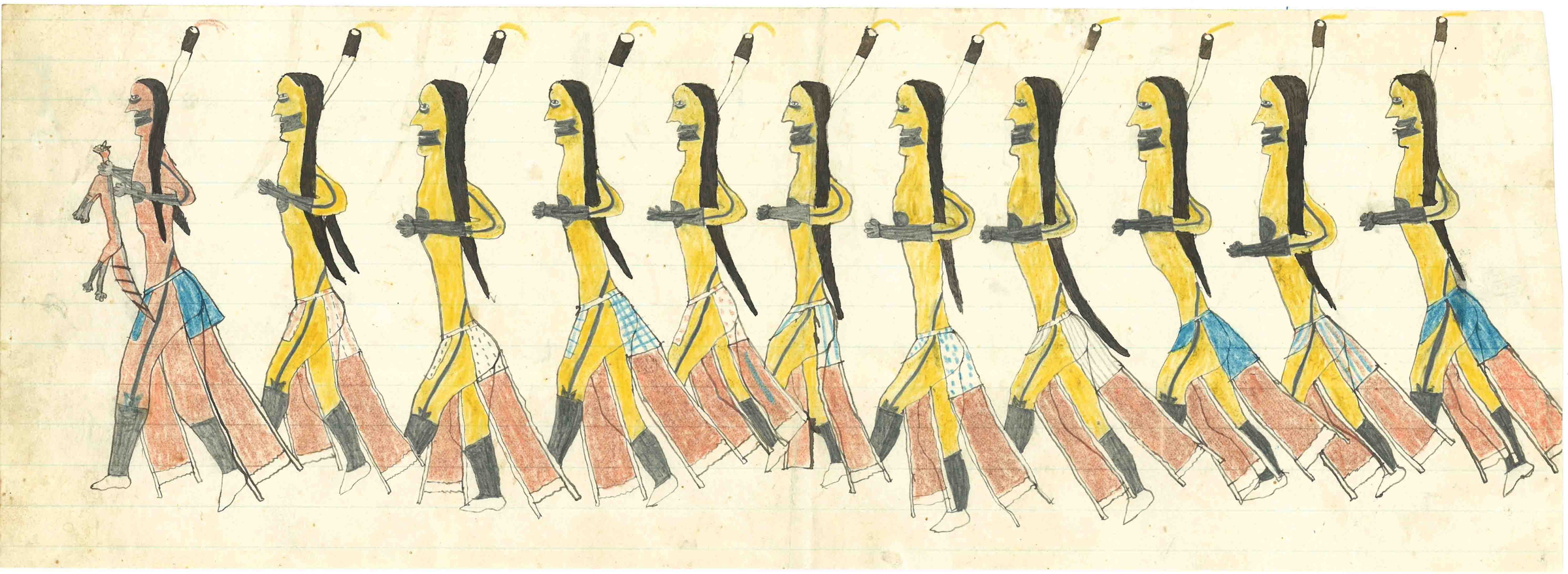Sheridan Pages Provenance

Various owners (pages dispersed), H. Malcolm Grimmer Antique American Indian Art, Santa Fe, NM; William Drake, descendant of John L. Sheridan, from Sheridan family by inheritance.
William Drake wrote, in 1997:
"My name is William Drake. My mother, Ruth Drake (1905-1997) was a first cousin to Nellie and Mary Sheridan, daughters of John L. Sheridan. John was the brother of Phillip Sheridan. While Nellie married, she had no children; Mary was a spinster. When Ruth was about 12, her mother died unexpectedly, and Nellie, along with Mary, who were about 10 years older, took a strong hand in guiding my mother through her adolescence. This experience forged a strong bond between the cousins. As Nellie grew older, my mother frequently visited at the Sheridan home in Somerset, Ohio. I often accompanied her on these trips, and vividly remember being surrounded by the memorabilia and ephemera of John and Phil. While I do not remember the ledger, - it was probably deemed too fragile for a youngster to play with - it clearly was John Sheridan's. His name is written in the front of the ledger, and at Nellie's death, the contents of the home passed to my mother. At my mother’s death in 1997, I became the caretaker of the Sheridan family memorabilia. The ledger book was part of this inheritance. Signed, William Drake September 10, 2013"
Tom Cleary, Excerpt form "THE SHERIDAN PAGES: At the heart of the Southern Cheyenne warrior",http://www.metroshownyc.com/essays-1/the-sheridan-pages-at-the-heart-of-the-southern-cheyenne-warrior
That The Sheridan Pages have survived is likely due to their unique collection history. At Camp Supply, where the Southern Cheyenne were located after the Red River Wars, it was naively thought that the nomadic Southern Cheyenne would take to farming as many Eastern tribes had. While the camp was charged with protecting the Southern Cheyenne, its nominal function was to supply General Philip H. Sheridan’s aggressive Indian campaigns. Philip’s brother, John L. Sheridan (1837-1898), a trained lawyer and certified in land registry, was brought into the camp in the mid-70s to assist with its operations. It was John who collected The Sheridan Pages and it is after him that these pages have been named.
John likely acquired these pages in the late 1870s, not long after the trading post scandals in the late 70s forced a restructuring and, consequently, his eventual resignation. John’s relationship to Philip would have been the likely cause. Due to trader scandals nearby at Fort Sill in 1876, many agents came under increasing scrutiny for collusion, bribery and cronyism with regard to the handling of Indian annuities. Since their acquisition, The Sheridan Pages have remained in the Sheridan family and have been handed down by descent. The loose pages were discovered tucked beneath the inside cover of another book, one belonging to John L. Sheridan [The Sheridan Ledger, on PILA]. It is perhaps for this reason that the pages, in spite of their age, were so well preserved.